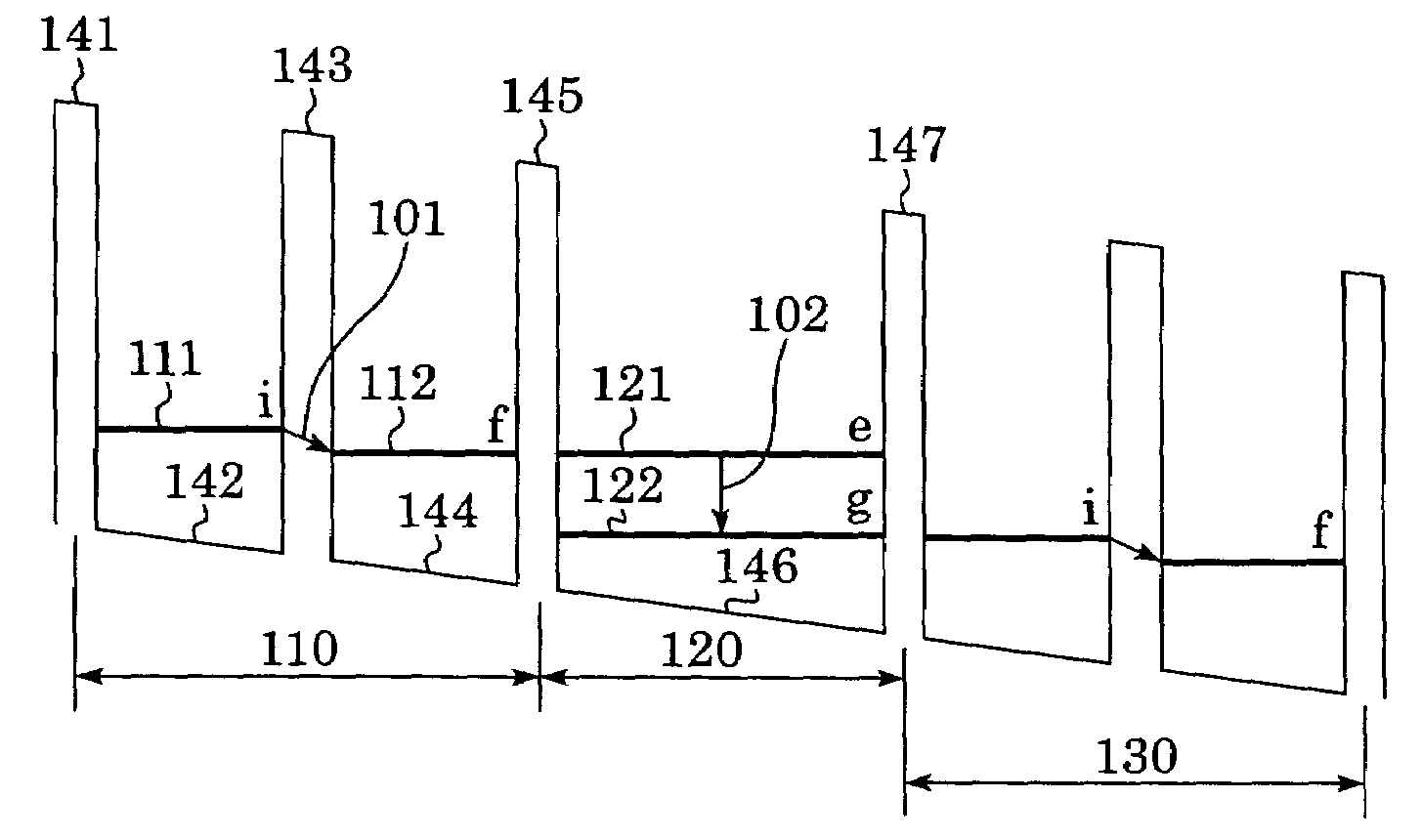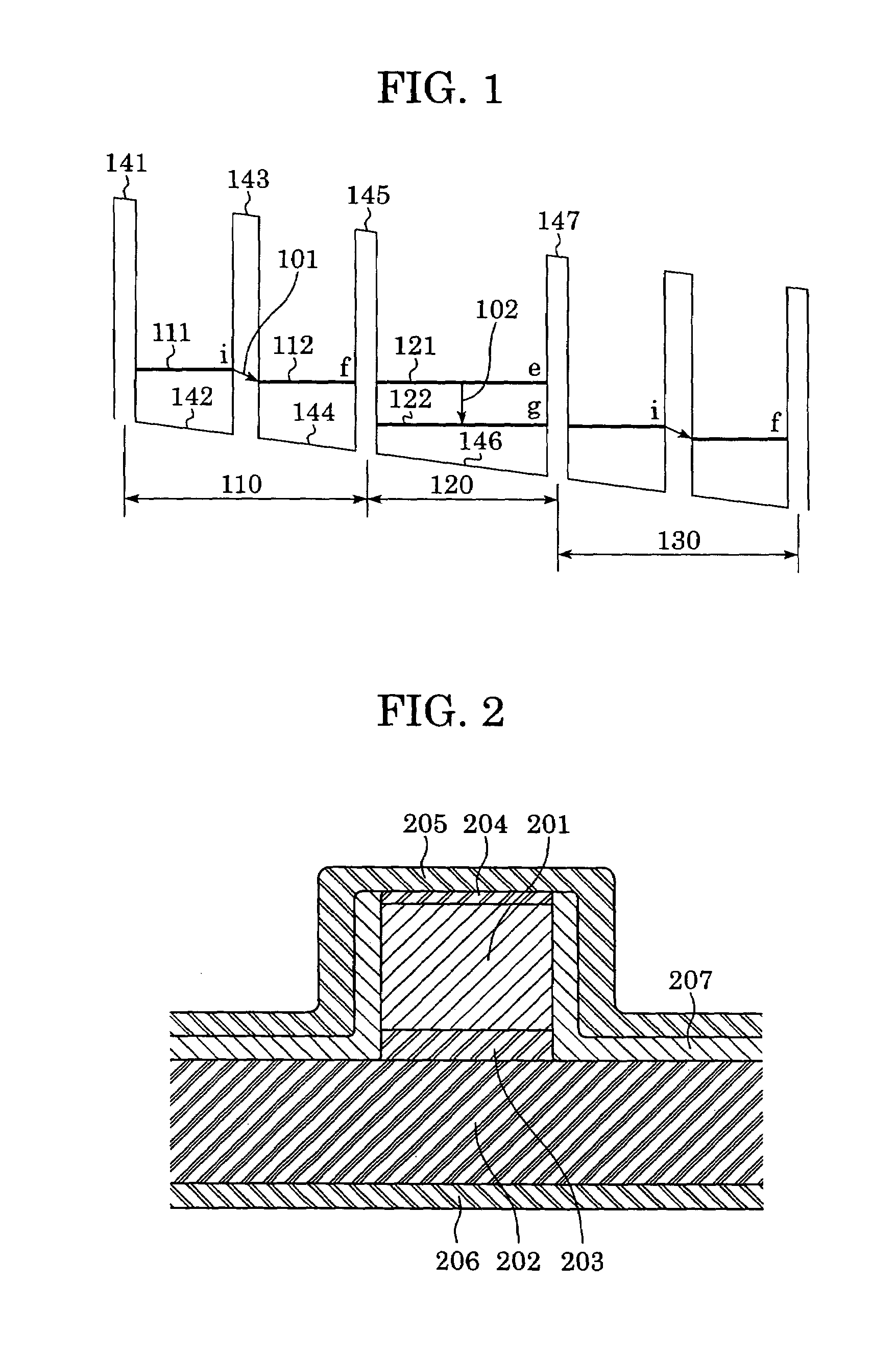Quantum cascade laser device
a laser device and quantum cascade technology, applied in semiconductor lasers, laser details, electrical devices, etc., can solve the problem that the inversion of the population required for laser oscillation is typically impossible, and achieve the effect of stabilizing the energy distribution of carriers in the region b and stabilizing the energy distribution
- Summary
- Abstract
- Description
- Claims
- Application Information
AI Technical Summary
Benefits of technology
Problems solved by technology
Method used
Image
Examples
Embodiment Construction
[0020]An exemplary embodiment of the present invention will now be described with reference to FIG. 1.
[0021]In a multiple quantum well in a semiconductor device according to the present invention, a region A 110 and a region B 120 are periodically repeated as a repeating unit. FIG. 1 shows a part of the structure of a conduction band when an electric field is applied to the multiple quantum well.
[0022]The region A 110 includes potential barriers 141, 143, and 145, and quantum wells 142 and 144. This structure provides an energy level i (111) and an energy level f (112). The energy level i and the energy level f are spatially separated by the potential barrier 143. However, when the energy levels are designed so that a weak-coupling (i.e. overlap of wave functions is relatively small) is formed, an electron is transported from the energy level i to the energy level f by photon-assisted tunneling 101.
[0023]As shown in FIG. 1, when energy Ei of the energy level i is larger than energy ...
PUM
 Login to View More
Login to View More Abstract
Description
Claims
Application Information
 Login to View More
Login to View More - R&D
- Intellectual Property
- Life Sciences
- Materials
- Tech Scout
- Unparalleled Data Quality
- Higher Quality Content
- 60% Fewer Hallucinations
Browse by: Latest US Patents, China's latest patents, Technical Efficacy Thesaurus, Application Domain, Technology Topic, Popular Technical Reports.
© 2025 PatSnap. All rights reserved.Legal|Privacy policy|Modern Slavery Act Transparency Statement|Sitemap|About US| Contact US: help@patsnap.com



